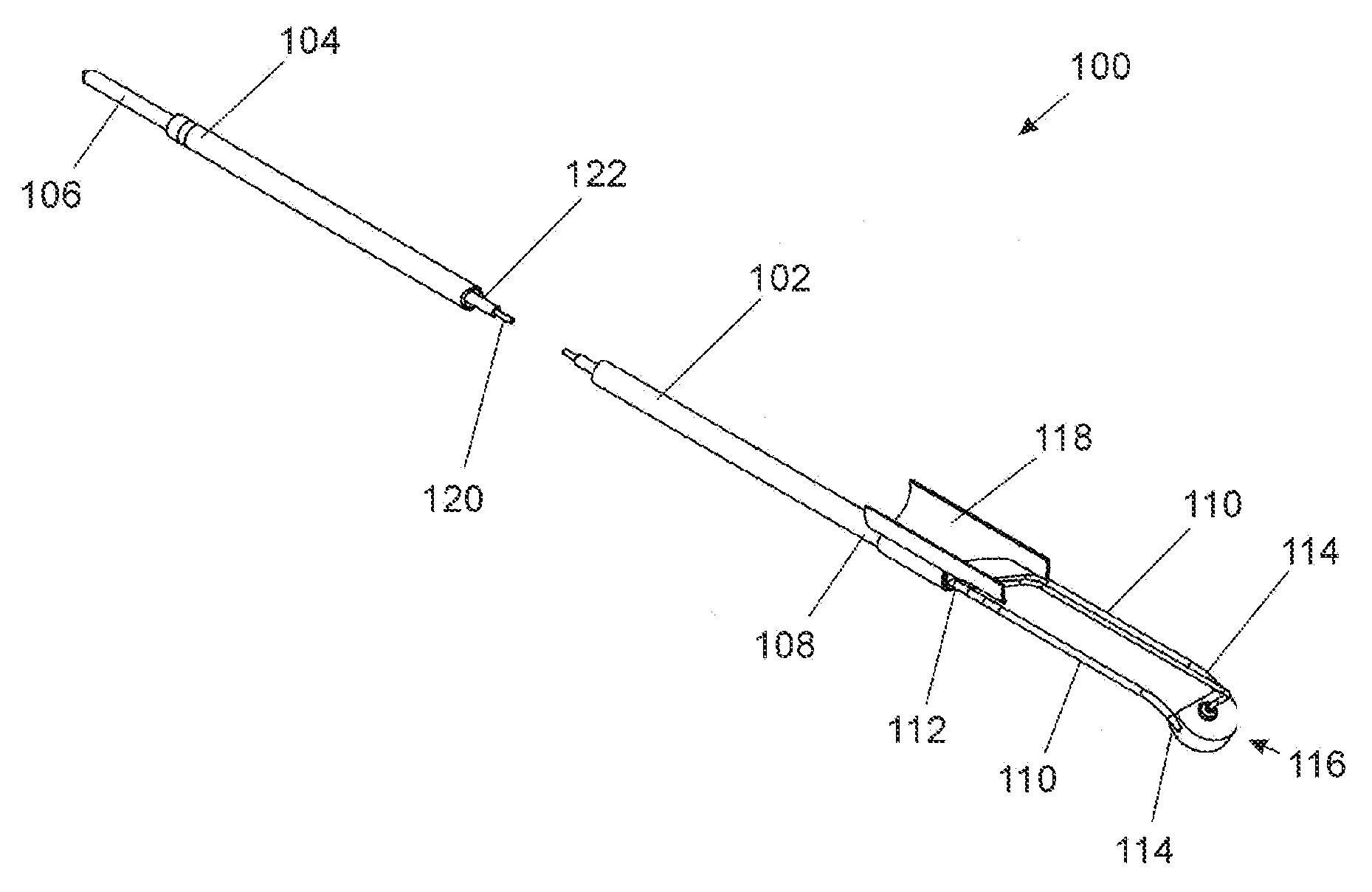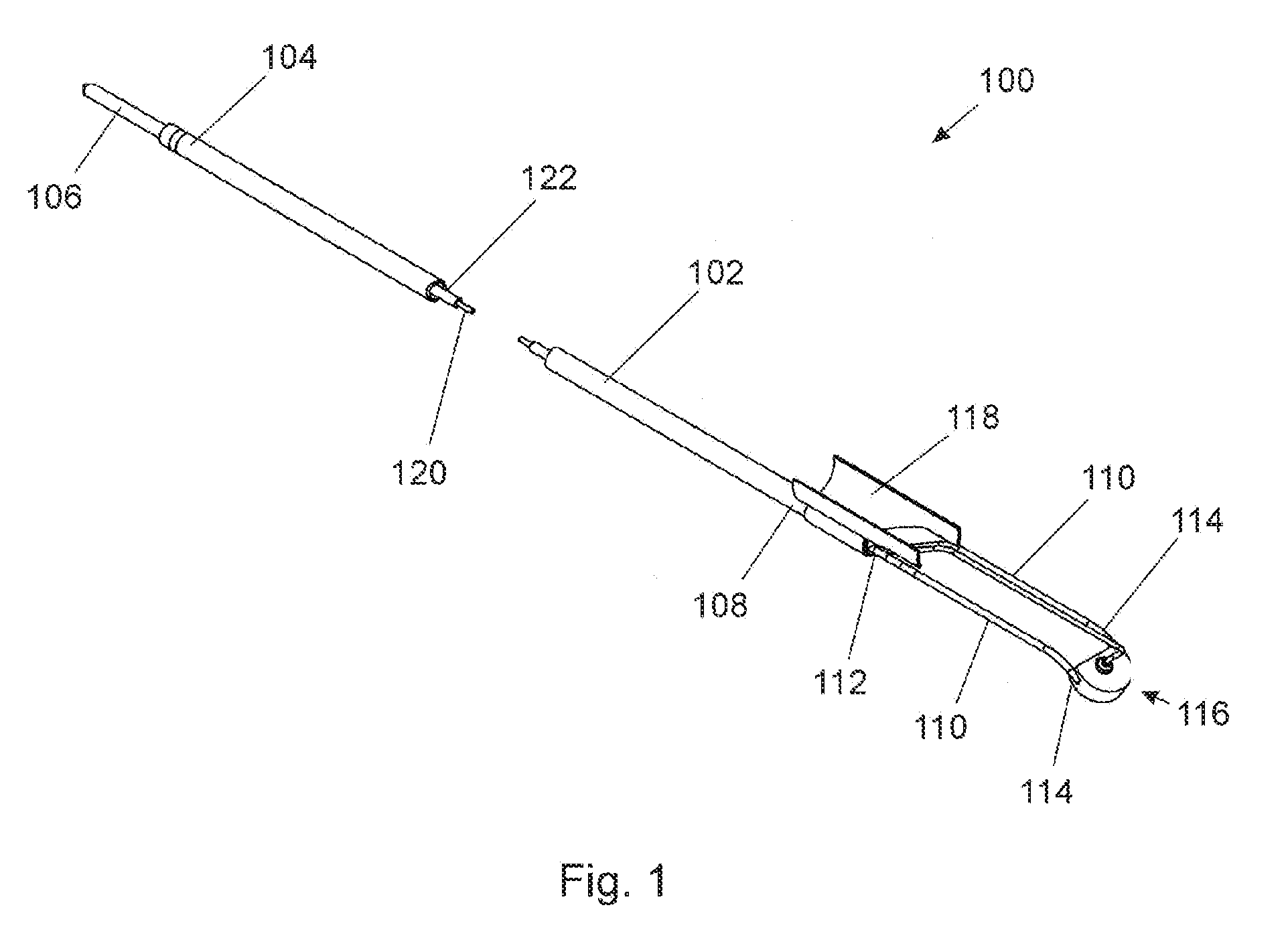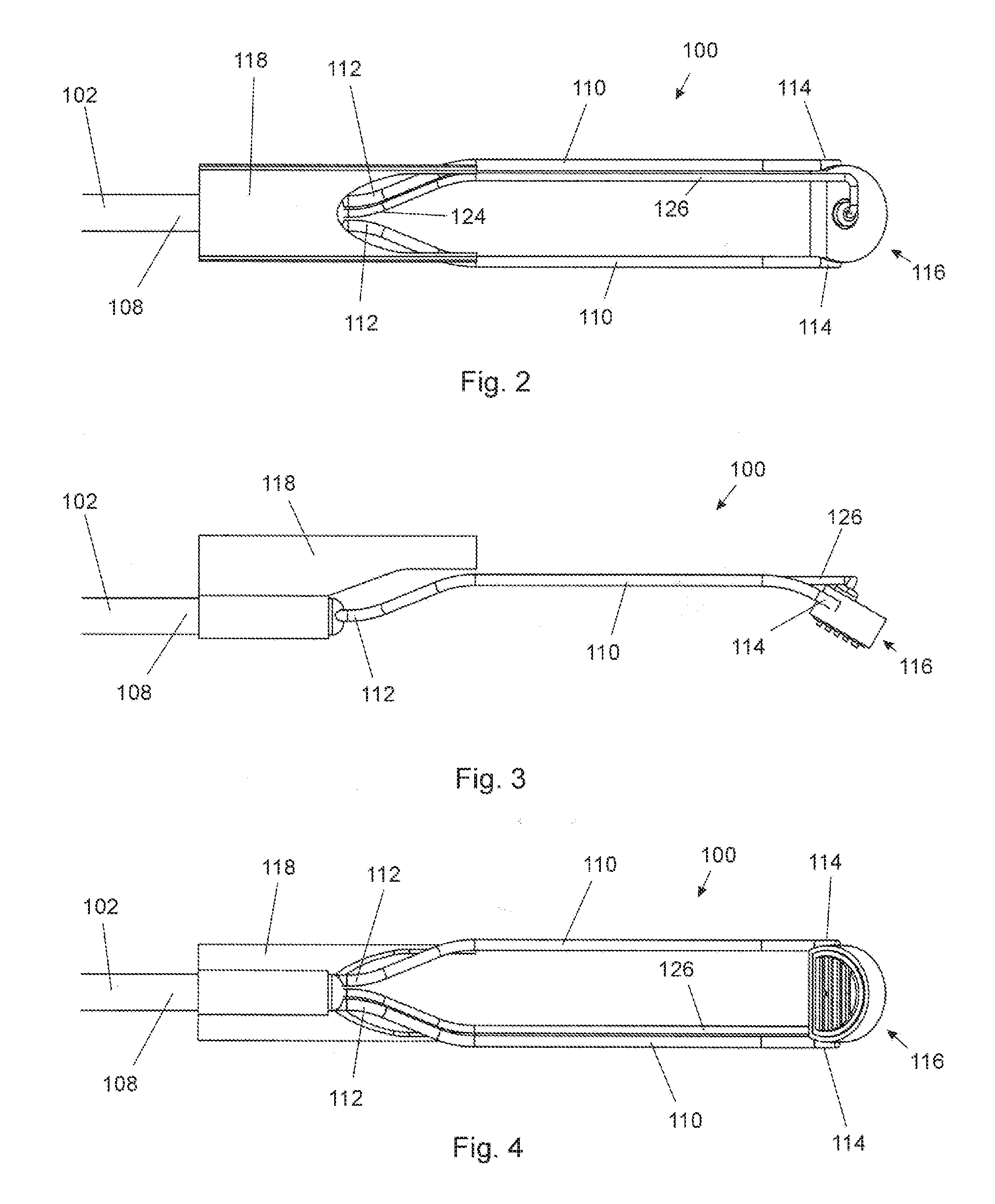Electrosurgical Device Having Floating Potential Electrode and Adapted for Use With a Resectoscope
- Summary
- Abstract
- Description
- Claims
- Application Information
AI Technical Summary
Benefits of technology
Problems solved by technology
Method used
Image
Examples
examples
[0131]Hereinafter, the present invention is described in more detail by reference to the exemplary embodiments. However, the following examples only illustrate aspects of the invention and in no way are intended to limit the scope of the present invention. As such, embodiments similar or equivalent to those described herein can be used in the practice or testing of the present invention.
[0132]Referring to FIGS. 1 through 4, which depict an electrosurgical probe specifically configured for use with a resectosope (not shown) and constructed in accordance with the principles of this invention, probe 100 has an elongated tubular member 102 with a proximal end 104 having an electrical connector 106 suitable for connecting via an electrical cable to an electrosurgical generator, and a distal end 108. Members 110 have proximal ends 112 mounted to distal end 108 of elongated tubular member 102, and distal ends 114 to which are mounted electrode assembly 116. Optional electrode stabilizer 11...
PUM
 Login to View More
Login to View More Abstract
Description
Claims
Application Information
 Login to View More
Login to View More - R&D
- Intellectual Property
- Life Sciences
- Materials
- Tech Scout
- Unparalleled Data Quality
- Higher Quality Content
- 60% Fewer Hallucinations
Browse by: Latest US Patents, China's latest patents, Technical Efficacy Thesaurus, Application Domain, Technology Topic, Popular Technical Reports.
© 2025 PatSnap. All rights reserved.Legal|Privacy policy|Modern Slavery Act Transparency Statement|Sitemap|About US| Contact US: help@patsnap.com



